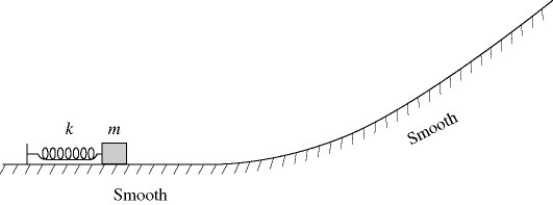A box of mass m is pressed against (but is not attached to) an ideal spring of force constant k and negligible mass,compressing the spring a distance x.After it is released,the box slides up a frictionless incline as shown in the figure and eventually stops.If we repeat this experiment with a box of mass 2m 
A) the lighter box will go twice as high up the incline as the heavier box.
B) just as it moves free of the spring,the lighter box will be moving twice as fast as the heavier box.
C) both boxes will have the same speed just as they move free of the spring.
D) both boxes will reach the same maximum height on the incline.
E) just as it moves free of the spring,the heavier box will have twice as much kinetic energy as the lighter box.
Correct Answer:
Verified
Q1: Which,if any,of the following statements concerning the
Q2: Block 1 and block 2 have the
Q5: A ball drops some distance and gains
Q6: The plot in the figure shows the
Q11: A box of mass m is pressed
Q12: An athlete stretches a spring an extra
Q12: A tennis ball bounces on the floor
Q14: It requires 6.0 J of work is
Q15: When an object is solely under the
Q20: You do 174 J of work while
Unlock this Answer For Free Now!
View this answer and more for free by performing one of the following actions

Scan the QR code to install the App and get 2 free unlocks

Unlock quizzes for free by uploading documents